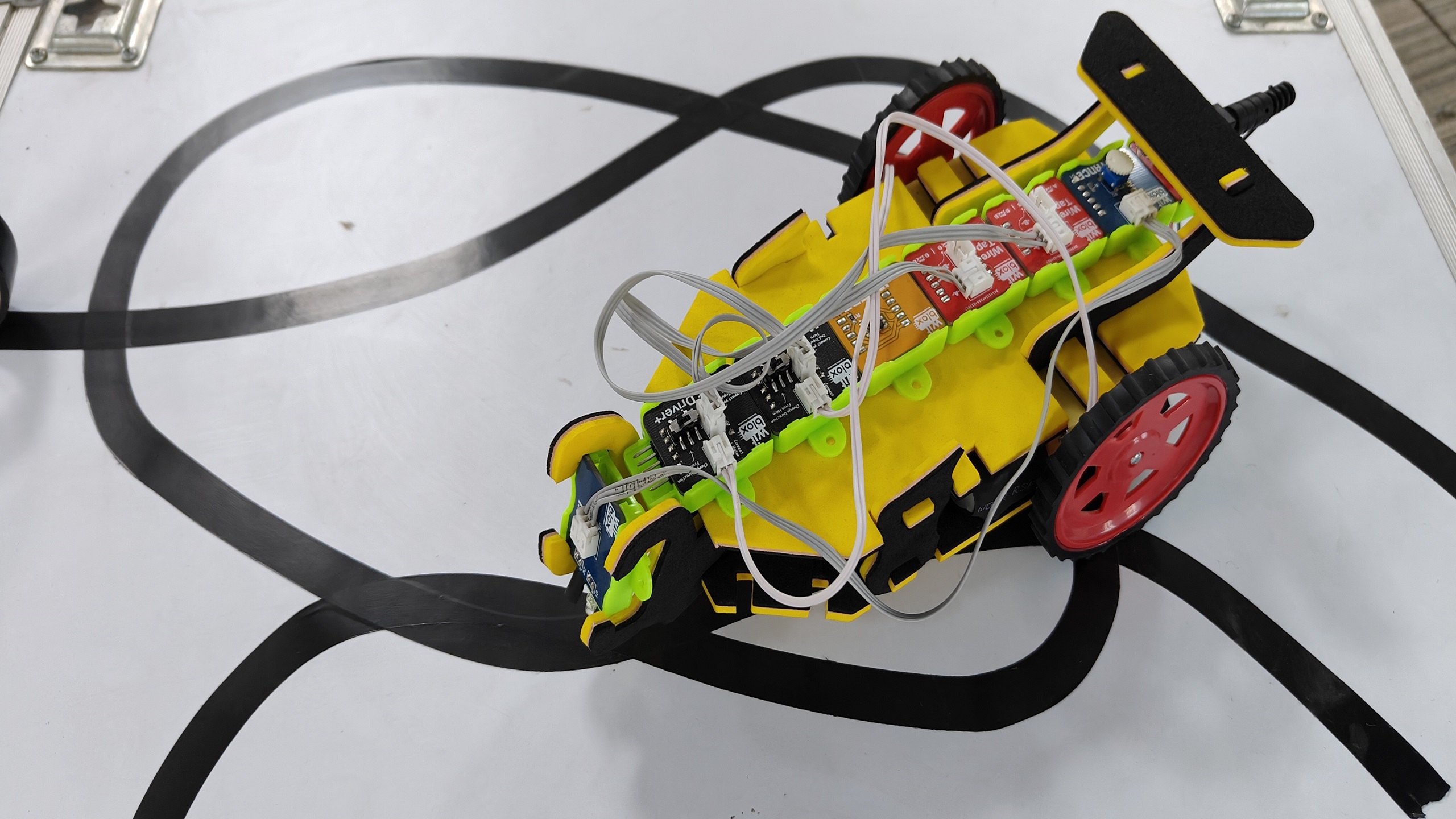In the world of robotics, line follower robots have gained immense popularity for their intriguing capabilities. These autonomous machines, often built using Arduino, can trace and follow lines on the ground with precision. In this comprehensive guide, we will delve into the realm of line follower robots, understanding their circuitry, programming, and diverse applications.
Understanding Line Follower Robots
A line follower robot is a simple yet fascinating creation in the field of robotics. It’s designed to autonomously track a line, typically a dark line on a lighter surface, such as a black line on a white floor. These robots use various sensors and an intelligent control system to navigate along the path, ensuring they stay within the lines.
Line Follower Robot Using Arduino
Arduino is a popular platform for creating line follower robots. It offers a user-friendly environment for programming and interfacing with various sensors and actuators. With Arduino, you can build a line follower robot that’s both efficient and customizable.
The Core Components
Before diving into the details of building a line follower robot, it’s essential to understand the core components and the circuitry involved.
Line Follower Robot Circuit Diagram
A line follower robot circuit diagram typically consists of sensors to detect the line, motor drivers to control the movement, and an Arduino board for processing. A circuit diagram helps in visualizing the connections between these components.
Line Follower Robot Kit
For beginners, using a line follower robot kit can be a great starting point. These kits often include all the necessary components, including sensors, motors, and the Arduino board. They simplify the assembly process and provide a hands-on learning experience.
Building Your Line Follower Robot
Now, let’s explore how to create a line follower robot step by step.
How to Make a Line Follower Robot
- Gather Components: Start by assembling all the necessary components, including sensors, Arduino board, motor drivers, and chassis.
- Assemble the Chassis: Build the robot’s physical structure, ensuring it has space for the sensors and motors.
- Sensor Placement: Mount the line-following sensors on the chassis, typically facing the ground to detect the line.
- Connect the Electronics: Wire the sensors to the Arduino board and connect the motor drivers to the motors for movement control.
- Programming: Write the code for your line follower robot using Arduino IDE. The code should instruct the robot to follow the line based on sensor input.
- Testing and Calibration: Test your robot on a line-following track and calibrate the sensors and code to ensure optimal performance.
Applications of Line Follower Robots
Application of Line Follower Robot
Line follower robots find applications in various fields, showcasing their versatility.
- Industrial Automation: In industrial settings, line follower robots can transport materials between different locations on the factory floor, optimizing efficiency.
- Agriculture: In agriculture, these robots can be used for precision farming. They follow lines to plant seeds, apply fertilizers, or even harvest crops with minimal human intervention.
- Security and Surveillance: Line follower robots equipped with cameras can patrol predefined paths and provide surveillance in large areas, enhancing security.
- Education and Research: Line follower robots are excellent educational tools for teaching robotics concepts and programming. They are also used in research labs to test algorithms and sensors.
- Entertainment: Line follower robots are used for entertainment purposes in amusement parks and exhibitions. They can provide visitors with an interactive experience.
Challenges and Advanced Line Follower Robots
As with any technology, line follower robots face challenges and continuous improvements.
Fastest Line Follower Robot
One exciting aspect is the quest to build the fastest line follower robot. Enthusiasts participate in competitions to demonstrate their robot’s speed and accuracy in following lines.
Advance Line Follower Robot
Advanced line follower robots incorporate cutting-edge technology, such as machine learning algorithms, to adapt to changing line patterns and navigate complex tracks.
Documentation and Reports
Line Follower Robot Project Report
When working on a line follower robot project, it’s crucial to document your progress. A project report helps in detailing the components used, the circuit diagram, the code, and the challenges faced during the project.
Sharing Knowledge – Line Follower Robot PPT
Creating a PowerPoint presentation (PPT) is an effective way to share knowledge about line follower robots with a broader audience. A well-structured presentation can cover the basics, applications, and even showcase your own project.
Conclusion
Line follower robots, whether basic or advanced, open up a world of possibilities. Their applications span across industries, making them a valuable addition to the field of robotics. With the right components, programming, and a dash of creativity, you can embark on an exciting journey of building your own line follower robot and exploring its diverse applications.
line follower robots, often built using Arduino, are fascinating machines that can autonomously track and follow lines on the ground. By understanding the core components, building your robot, and exploring their applications, you can unlock the potential of these versatile creations in the world of robotics. Whether you’re a hobbyist, a student, or a professional, the world of line follower robots offers endless possibilities for learning and innovation.

